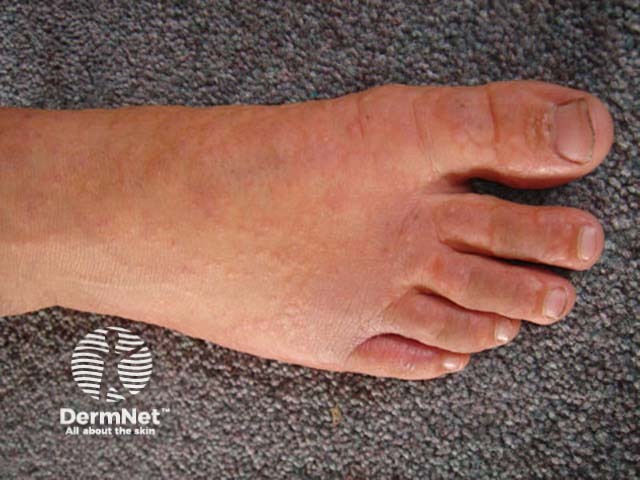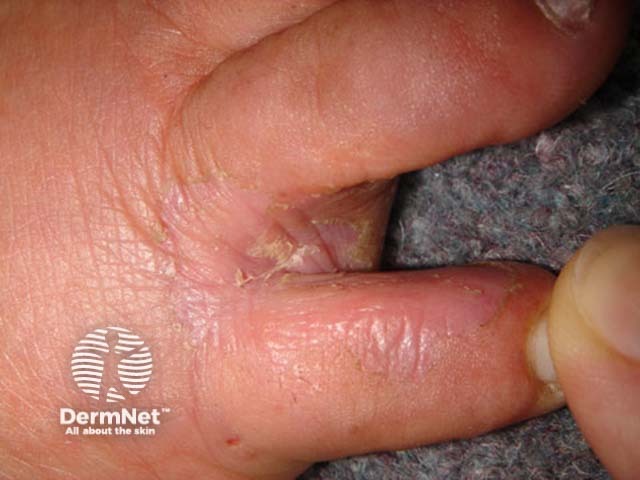Main menu
Common skin conditions

NEWS
Join DermNet PRO
Read more
Quick links
This quiz tests your diagnostic skills for blistering conditions affecting the feet.
Blisters are relatively common findings on one or both feet. They are formed by intraepidermal or subepidermal cellular separation. This may arise because of mechanical injury, infection, or immunological reaction to exogenous or autogenous factors. The blisters may be filled with clear or haemorrhagic fluid or pus.
For each of the ten cases, study the image(s) and then answer the questions. You can click on the image to view a larger version if required.
Each case should take approximately 2 minutes to complete. There is a list of suggested further reading material at the end of the quiz.
When you finish the quiz, you can download a certificate.


What is the cause of the blistering?
Tinea pedis and ide reaction
Describe the clinical features of this condition.
An acute eruption of diffuse papulovesicles on the hands and feet, and sometimes on the trunk and limbs as well, may be an ide reaction. This arises as an autosensitisation reaction to a localised area of inflammation, in this case interdigital tinea pedis due to Trichophyton rubrum.